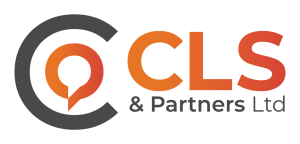By

Nadia Morales
Today’s world is a burgeoning arena of enterprises and corporations seeking a competitive edge. However, to keep ahead of the competition for new clients, a company must be able to step outside of its comfort zone and investigate new regions and markets. Translation and localization are key in helping organizations reach a global audience to achieve success.
In the age of “content-driven ICT”, a new megatrend in standardization is on its way. Given the enormous increase in structured content, reliability and quality of content is becoming a major concern, and translation and localization do not escape this trend. International standards and certification methods are applied not only to processes of content creation but to the translation process as well.
In this article, we will be dealing with one aspect of standardization in translation and it is the representation of names of languages and language groups, ie the ISO language codes.
ISO language codes are the global standard for language codification by the International Organization for Standardization, allowing international businesses to recognize the names of languages and groups of languages and or dialects. It’s worth noting that language codes are now playing a key role in the field of machine learning.
Because there are so many live languages on the planet, it was necessary to identify and categorize them. The most well-known standard sets for the names of languages and groups are ISO 639 and its subdivisions: ISO 639-1 (2002), ISO 639-2 (1998), and ISO 639-3 (2007), ISO 639-4 (2010), ISO 639-5 (2008) and ISO 639-6 (2009).
Examples of ISO 639-1 and ISO 639-3 would be as follows:
| ISO 639-1 | definition | alpha 3 code | definition |
|
ar |
Arabic |
now
arb arz |
Macro
standard arabic Egyptian Arabic |
| zh | Chinese | zho
cmn yue nan |
Chinese (macro)
Mandarin Cantonese Southern Min |
| Of | German | due | German |
Note that the standard ISO 639-5 (2008) was last reviewed and confirmed in 2022. It provides a code consisting of language code elements comprising three-letter language identifiers for the representation of names of living and extinct languages and groups. Languages designed exclusively for machine use, such as computer-programming languages, are not included in this code.
ISO 15924 is regarded as the ideal standard for language scripts. The codes were devised for use in terminology, lexicography, bibliography, and linguistics, but they may be used for any application requiring the expression of scripts in coded form.
- IETF language tags
IETF language tags are codes that can recognize human languages. To distinguish language variants for countries, regions, or writing systems (scripts), IETF language tags combine subtags from other standards such as ISO 639, ISO 15924, ISO 3166-1, and UN M.49 . For example, the tag “en” stands for English and “es-419” for Latin American Spanish. It is used by computing standards such as HTTP, HTML, XML, and PNG formats.
In sum:
Managing ISO language codes can be daunting. For this reason, if you have a translation/ localization project engage or hire qualified professional linguists with the right support to make the right choices. At CLS we will be happy to quote your translation/localization project.


